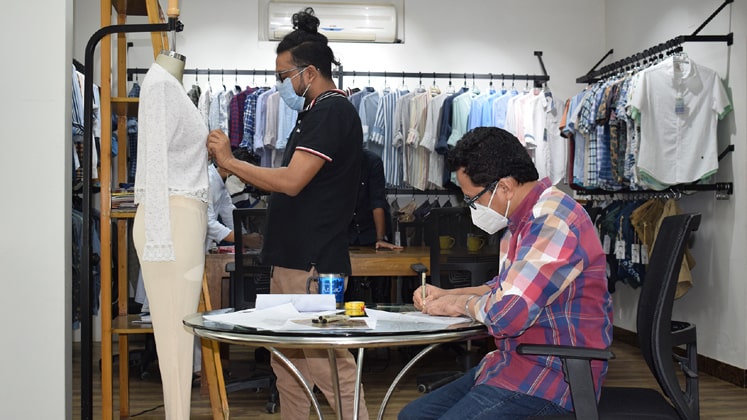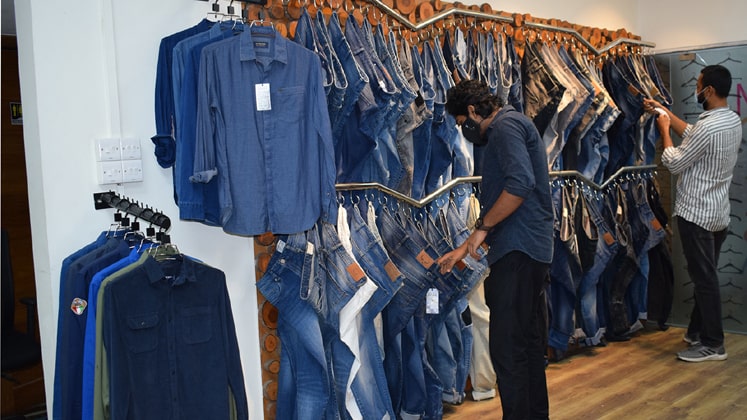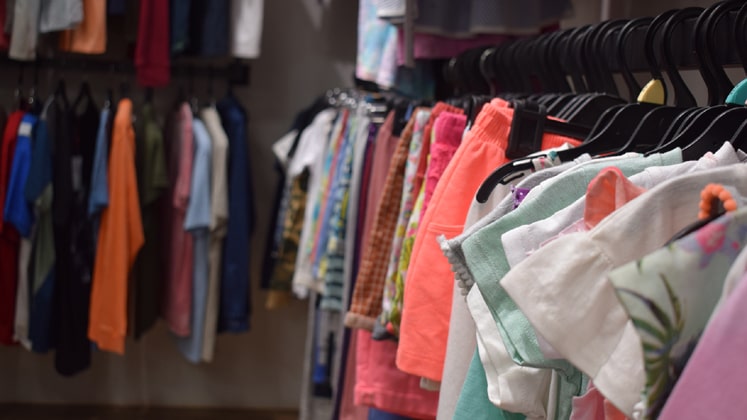As COVID-19 brings us back to square one, with the second wave of the pandemic already infiltrating several countries on the globe, the industry is gearing up for another tumultuous production season for Fall-Holiday ’21 and strained development for Spring/Summer ’22.
The pandemic is manifesting its worst form in India, as the country is finding itself in a series of regional lockdowns, daily curfews marred with an image of staggering numbers of lives lost. On the other hand, vaccination drives across the big buyer countries are ensuring a rise in the demand across markets. The supply chain paradigms are again strained in the wake of the new financial year, new yarn prices and the supply-demand incongruities.
Apparel Resources talks to Rajnish Kapoor, a NIFT alumna, and currently the Director & Founder of Bangladesh-based buying house, KRAYONS Sourcing Ltd, outlining the trends that will dictate the buying and sourcing cycles across the globe; the readiness of the end- consumer to buy more, yet intelligently; about the categories that are now returning back to their pre-Covid glory; and the ever-evolving buyer-vendor relationship that is now set to bloom as the pandemic led shared losses and the global socio-political scenario are bringing out the best in the business stakeholders for the sustenance of the supply chain and all its components.
With an experience of over 25 years in the industry with a strong start in production, Rajnish eventually began his own buying venture with Krayons, about 7 years ago. The company has diverse market customers across US, EU, SA, Australia and even caters to the Indian retail, with the prowess of its own design development, R&D, Product Development, Merchandising and Quality Assurance.
Global Demands and Consumer’s POV

As per Rajnish, the biggest buying regions – USA & UK, are returning to normalcy due to vaccinations, however he identifies that even though EU is falling behind, they are gradually going back to the normal trajectory as per the consumer shopping patterns. “US orders are pretty good,” he continues, “and the club business and the value chains like TJ Maxx, Walmart and Costco are performing great as people are getting amazing deals. Since there is some sanity now, there is positivity about recovery rates of buying behaviour.”
On a political level, even with a change in the administration, heavy investment went into creating the infrastructure to combat Covid, and authorities will find a way to increase taxation in the fashion sector as it does not fall under essentials industry primarily – it doesn’t hold much intrinsic value.
From the consumer’s point of view, Rajnish opinionates that conscious fast fashion culture is returning; with social media influencer success rates, Instagram Reels blowing up due to several challenges, further leading to the comeback of many pre-Covid loved categories. Knits spiked up during Covid and so did loungewear, because people were staying in. “I think this trend is going to change the most – people wanted comfort, people wanted easy mobility and a structured yet comfortable look during their stay-at-home meetings, and they were balancing the household-corporate dual life during the quarantine. However, now with the vaccinations, many are stepping out on global terms, and they want to be at par with all trends they see around themselves, and with tight margins and round the year discounting, are more ready to buy the clothes they feel will look aesthetically appealing.”
As per Rajnish, categories comprising of dress shirts, semi-formal dresses, tops and chinos are very much coming back on the buyers’ wish list. Even formals will come back because dressing up will be back. Wovens will return to their former glory as well, although the knits’ demand might not go under as people now know the versatility of the knitted fabric.
From India’s perspective, as a retailer and fashion buyer, things are not going to be as bad as the first lockdown, because last year everything was completely shut, meanwhile this year there is still some mobility – especially with e-commerce where people are seeing a little flexibility.
Rajnish continues, “E-commerce has found its growth in India on a massive stage. Order quantities of e-commerce giants like Ajio, Myntra, Reliance Trends are actually growing in significant numbers, and a lot more faster than last year. Mumbai is doing much better, Delhi is finding its pace as well. Retailers are holding back but orders are still coming in. Offline orders are still there, but a lot less.”
Rajnish avers, “Apart from these, people do not want to be seen with the same clothing again, add to that the need for sustainable fashion felt by consumers, rental fashion is finding a new boom in the coming seasons as well.” This is also corroborated by the fact that many thrift stores across Instagram and Facebook are finding a new footing in the lockdown as well – by offering exclusively available high fashion clothing, even if reused, at flea prices.
Also Read: Small buyers, importers and wholesalers account for 70% of apparel exports from India
Changing KPIs for Vendor Selection

This season is seeing a marked pressure in garment prices, as retailers are going for markdowns – high discount for leftover stock and smaller discount on new collections. Yarn prices also shot up by about 40 per cent, putting a lot of pressure on supply chain to make up for competitive pricing.
Buyers are looking at aggressive consolidation and distribution of business and are not keeping it set to one place region-wise. Suppliers that deliver good quality and competitive prices are at top of the mix. Buyers will keep up competitive pricing by keeping a smaller strategic supplier network and work on fixed price basis with them. Buying would be based on tenders, where one fabric quality program with a nominated price for a certain period of time will cater to more than one category – a combo of fashion and core styles spread across menswear, womenswear, kidswear, etc., so that the assortment is meaningful for the supplier as well. Part of the consolidated process per fabric program is benchmarked as per core styles, and then fashion styles are added to the same with minimal upcharges.
In order to avoid upcharges based on yarn, styling, or overall addition of details, bigger bulk quantities will be placed across different categories for vendor to accommodate margins and buyer to have more varied styles in similar fabric qualities and normalised pricing. “Almost each category is being costed by 2-3 suppliers at once, therefore price competitiveness and buyer-vendor mutually beneficial collaboration is a must. Holding onto the incumbent tag is necessary for the vendor, otherwise there is another vendor ready to take your place to garner and sustain business in the Covid times,” Rajnish elucidates.
Another KPI intrinsic to vendor selection would be Speed To Market, where they will be favouring 45 to 60 max days of delivery turnaround. In terms of order quantities across styles, width is much more, with many more styles and colours having smaller quantities to formulate a larger assortment.
Vendor-Buyer Collaboration
Earlier when the West was seeing issues, ethical customers were compliant enough to not cancel goods already onboarded or held at dock, or material already booked and garments in making, and asked the vendor to hold materials (pack on hold) and maybe use the same later on for coming seasons, or they chose the method of deferred payment where the vendor collaborated and agreed to retrieve the payment of these liable goods and other credit due through payments that were given in bits deferred by about 60 to 90 days. “We practised this in order to maintain our long-tern relationships with the buyer and the vendor, as these times, even though tough on pockets of all parties involved, were the true test of the credibility and commitment of each stakeholder involved in the supply chain,” says Rajnish.
Now that the factories are being affected and not able to churn out goods due to lack of labour capacity, which is down to about 50 per cent due to high labour migration, increasing attrition rates and also regional lockdowns imposed by authorities, vendors are reaching out to the buyer for equal collaboration. Buyers are thus distributing their assortment per season in a manner that deliveries are more spaced out within the season, so that vendor has the time to normalise capacity throughout the production cycle and thus, not face pressure to ship out bigger quantities in one go.
Deliveries for Fall ’21 and Holiday 2021 are also being pushed to help out the vendor in the current production cycle. “Many buyers are seeing the Covid situation in India, so they are also not placing any new or fast fashion orders with Indian vendors. Mostly core products are being placed, especially since vendor cannot quote correct delivery dates and orders.” Rajnish identifies another bottleneck as logistics, where issues such as lack of containers, increase in the pricing of logistics per volume basis are now affecting shipment as well.
As per Rajnish, “We tried to reduce our supplier base by making couple of our factories more vertical in material procurement. Secondly, we tried to move most business to fewer factories and keep the new ones on hold. In case there was any discount from customer- we shared the losses with them, so it was us, the vendors and the customers sharing the discount to help the situation. We try our best to make sure the buyer does not have to bear out of the way expenses.”
Value addition to attract buyers
Concluding the conversation, Rajnish points out a few things necessary for vendors today to attract buyers. “During Covid, the one thing we saw the most was digitisation of the supply chain – be it pre-production activities, sampling or technical aspects such as fittings. This boils down to one conclusion- the vendor has to be flexible enough to adopt and adapt new technologies to increase efficiency of the supply chain and eventually save up on transit times, costs and conversion of buyers’ demands to actual product.”
Rajnish points out that one such technology is 3D design and development, which is now being normalised by vendors in order to showcase the buyer the end product – right in the beginning of the cycle’s development processes. He also adds that vendors need to be more disciplined, lean and open to change in demand while entering any long-term or short-term relationship with the buyer. “It is all about how quick on your feet you are, and how willing you are towards changes like automation and high-skill level of personnel training. Rest, only a good, two-way vendor buyer collaboration can sustain businesses and brands today, even with a pandemic on our heels.”








